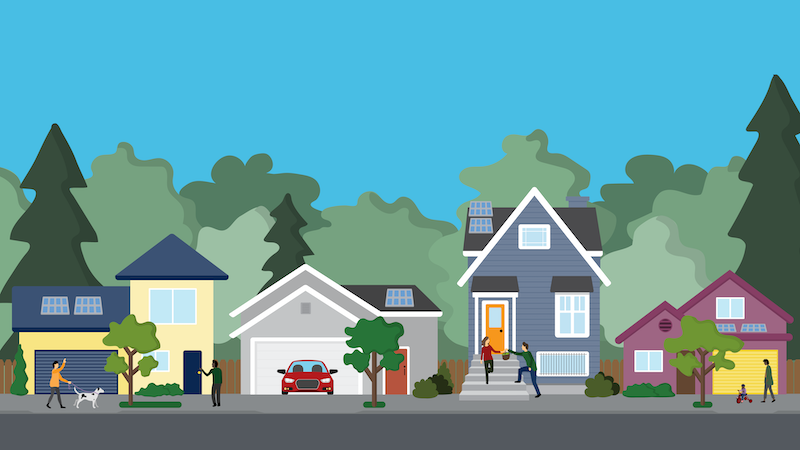On July 7, 2022, CIEE Associate Director and EcoBlock Project Manager Dr. Therese Peffer delivered a keynote address titled “The Oakland EcoBlock: A Block-Scale Urban Retrofit and Community Solar Microgrid” at the MIT A+B Applied Energy Symposium. Co-organized with Harvard, the symposium invites speakers from all over the world to discuss advancements in renewable energy technologies, energy storage, clean energy conversion, smart systems, and mitigation strategies. Peffer’s presentation addressed the potential of the Oakland EcoBlock to chart a course to decarbonization “that is scalable, that is equitable, that promotes resilience, improves air quality both indoor and outdoor, and strengthens community.”
Synergy and Scale: Tackling Decarbonization
Peffer began by sharing the EcoBlock hypothesis, which proposes a holistic, synergistic approach to decarbonization and assumes that “the most cost-effective way to drive clean, equitable energy, water conservation, and urban resilience is to address them together.” Demonstrating the power of this approach, Peffer juxtaposed the current emissions for the block with the projected emissions based on three different scenarios:
- Home electrification and efficiency improvements only;
- Electrification and efficiency addressed jointly with mobility, including access to electric vehicle (EV) car share; and
- Electrification, efficiency, and mobility improvements developed alongside a solar microgrid.
The latter approach showed a 61% emissions savings from the current scenario. The remaining 39% was primarily attributed to a household’s vehicles. Further emphasizing the value of a holistic approach, Peffer noted that the majority of EcoBlock participants would choose to give up their second vehicle if they had access to a shared electric vehicle.
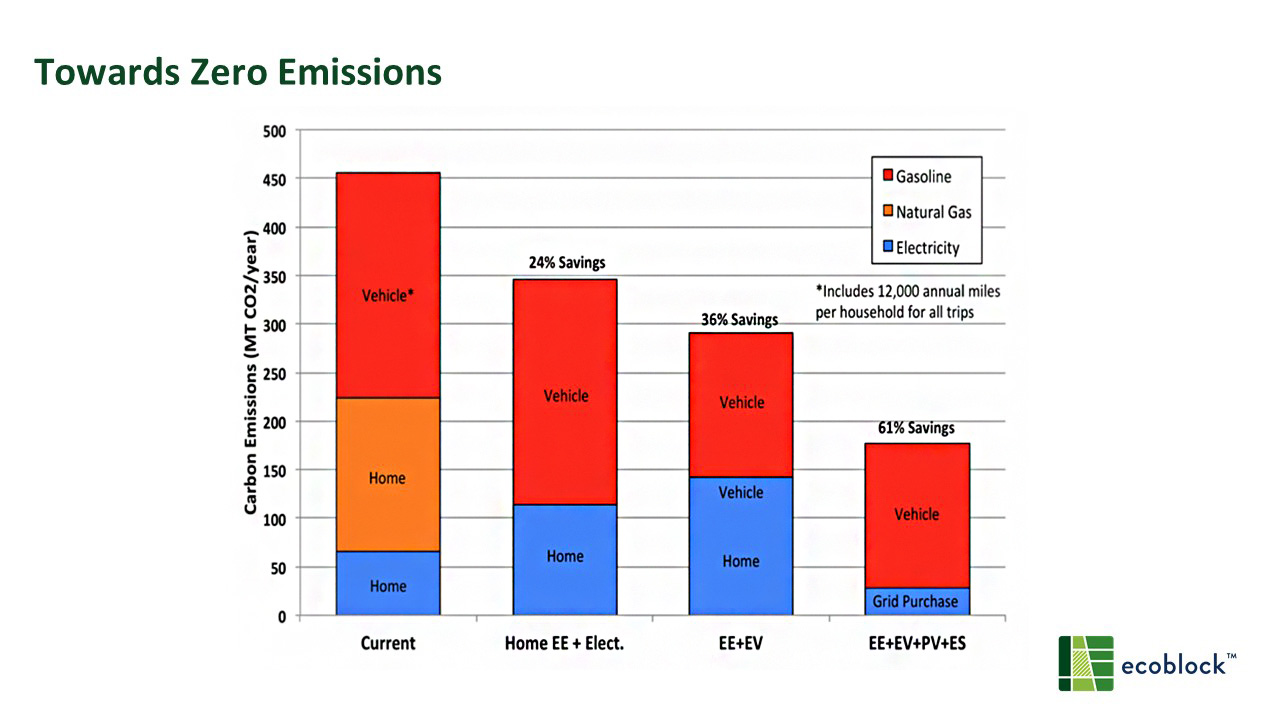
EcoBlock’s emphasis on an integrated solution to urban sustainability and resilience extends beyond technology to consider community, which influenced the decision to work at the neighborhood block scale. Peffer discussed the Goldilocks approach, which informed the project scope: while the global scale is too abstract, and the individual scale too small, the block scale is just right, leveraging a local community’s shared interests, ability to cooperate, and capacity to optimize for a single set of regulatory requirements. These factors converge to enable communities to develop and manage local energy in ways that would not be practical at a larger scale, and this sharing enables savings and lowers barriers to entry.
Through this lens, Peffer identified the social aspects of the project as both a key opportunity and challenge. She noted that the block residents were already close-knit and had a history of community organizing, which is essential to the long-term success of managing shared infrastructure. The Oakland EcoBlock participants are also economically and racially diverse, have varying degrees of technical knowledge, and come from different cultural and linguistic backgrounds (there are five languages spoken on the block). These dimensions introduce various difficulties in communicating and engendering trust, especially with respect to the research team. Therefore, developing and maintaining community trust, ensuring transparency, and working collaboratively with the residents are central pillars of the project.
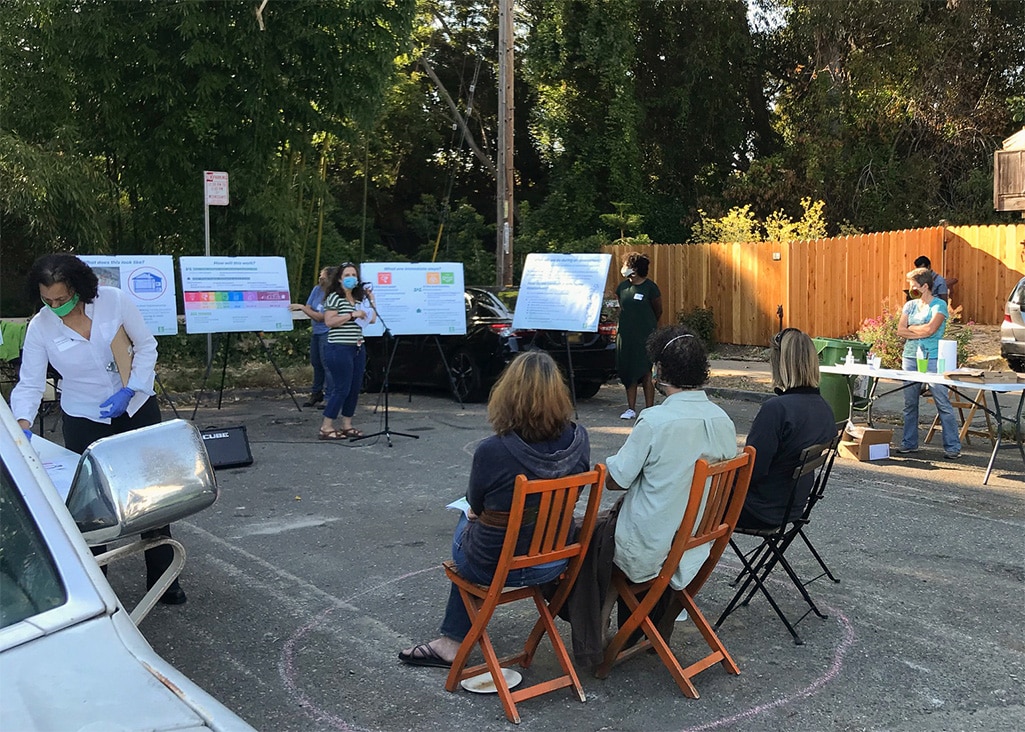
Technically Speaking: Deploying the Oakland EcoBlock
Peffer cited the profound influence of regulatory bodies and utility companies on the project design, noting that while microgrid enablement is in its infancy, the California Public Utilities Commission (CPUC) provides a broad legal framework to define how such projects can work, as well as provide incentives to drive new development. On the utilities side, she shared how Pacific Gas and Electric (PG&E) drove the design of the EcoBlock microgrid. “The initial intention was to build a direct current, not alternating current, backbone to the microgrid and the utility did not like that,” she explained. “They wanted to be involved and they wanted us to continue to use the distribution lines, so we had to modify the design because we wanted to work with the utility—it didn’t make sense not to.”
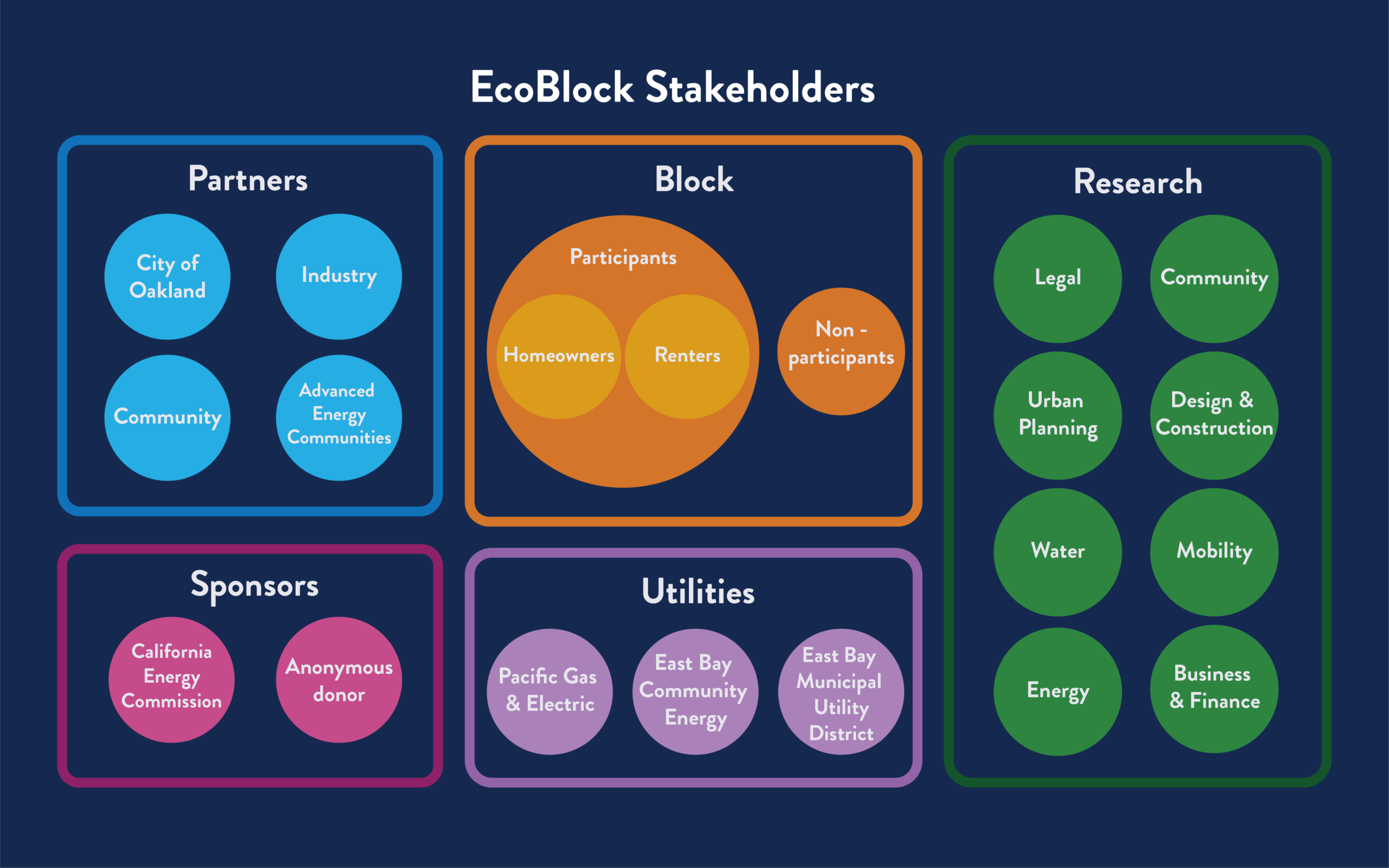
With respect to the business model and financing of the project, Peffer discussed the specific selection criteria that determined the legal structure for the EcoBlock community association. It was important that the microgrid’s governing body have the authority and ability to:
- Apply for permits and regulatory approvals
- Hold a property interest in improvements that run with the land
- Levy dues to finance entry fees (e.g., hookups), operation and maintenance (O&M), and insurance
- Perform or contract for O&M including replacing equipment
- Take out insurance policies and minimize liability
- Enforce for nonpayment and remove equipment, and engage in collective decision-making and dispute resolution
- Provide residents a means of entering and leaving the association
While options such as a cooperative corporation or a community facilities district (aka Mello-Roos) had been considered, the research identified a nonprofit mutual benefit corporation, which functions similarly to an HOA, as the best choice.
The organization, governance, and financing of the EcoBlock pilot project may differ from future iterations. While the Oakland EcoBlock is a research project supported by grants, future EcoBlocks will need to find alternative ways to cover capital costs. Peffer shared two viable business models for future EcoBlocks: one centered on collaboration between the community association and the utility company, and another in which the association delegates ownership and management of the shared infrastructure to an Energy-as-a-Service (EaaS) provider and uses association dues to pay for the EaaS.
Years, Not Decades: How Can the EcoBlock Model Scale Quickly?
Following the presentation was a lively Q&A session that delved into several bigger-picture themes relevant to replicating the Oakland EcoBlock. One participant asked a question that was indicative of the broader challenges of decarbonization: How can the EcoBlock model be reproduced at scale in a way that facilitates a transition to clean energy in years, not decades? The question highlighted a fundamental challenge of the energy transition, which is the difficulty of finding a solution that can be deployed quickly and effectively to address climate change.
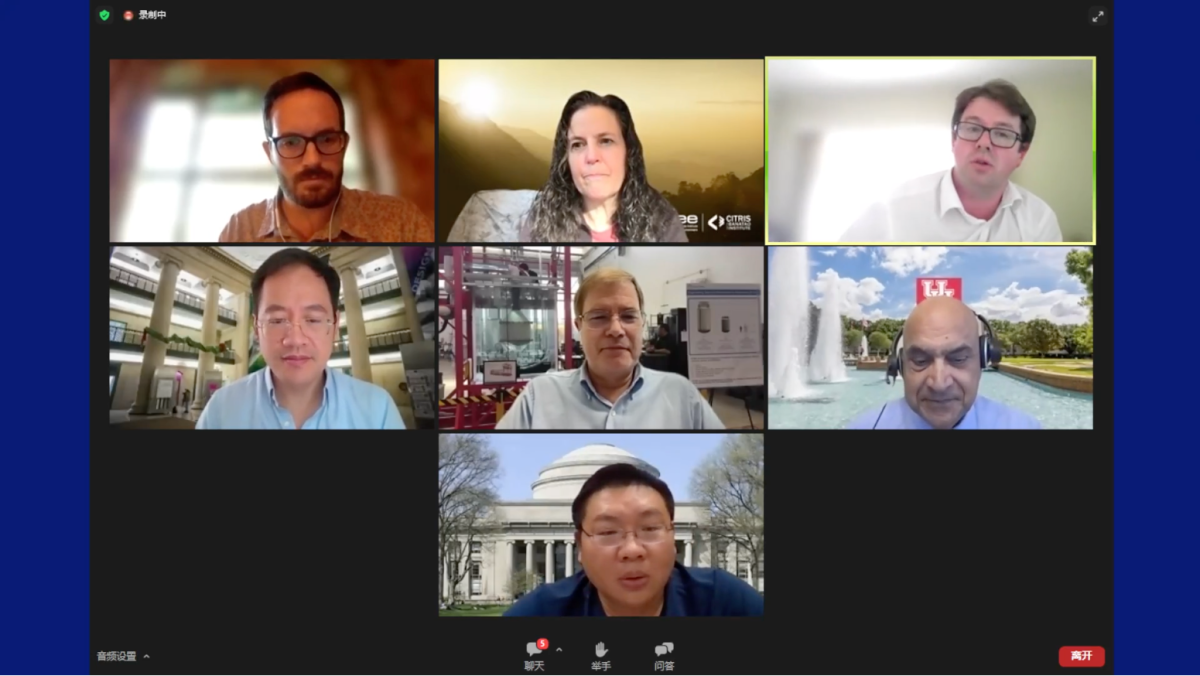
While there is no easy, one-size-fits-all solution to scaling the EcoBlock model, Peffer’s response touched on a broader theme: the importance of aligning incentives. She noted how working closely with the local community, government, and public utility was essential to removing barriers to the development of the pilot EcoBlock. Looking to the future, Therese stressed the importance of finding motivated participants and involving governing authorities and utilities early in the block selection process. Working with engaged neighborhoods in areas that need electrical infrastructure upgrades helps ensure a win-win for all stakeholders. Aligning community, regulatory, and utility interests can remove much of the friction that often halts progress and carries the possibility for rapid change.
View a recording of the full keynote session (Dr. Peffer’s presentation begins at the 1:55:00 mark)
Feature image credit: Anna Haefele
A version of this article originally appeared on the EcoBlock blog and has been published here with permission.

